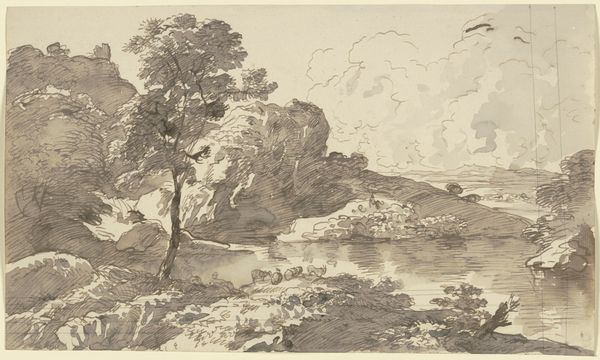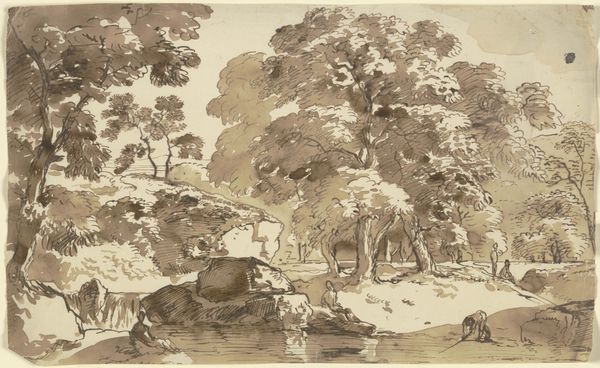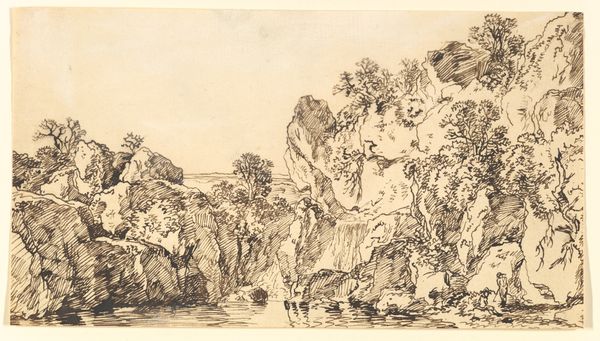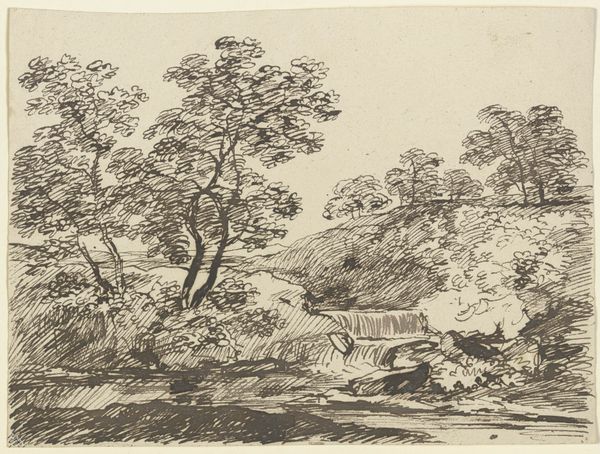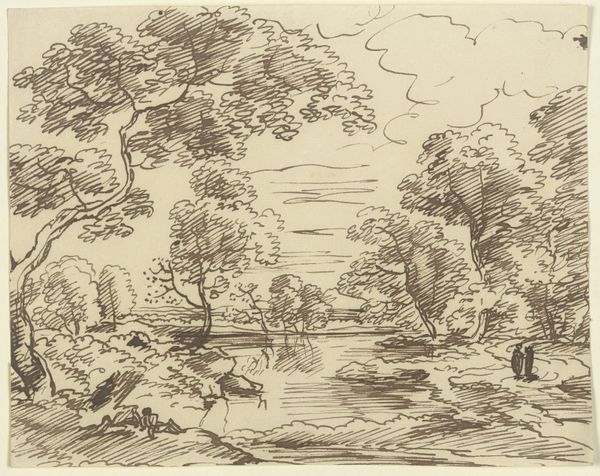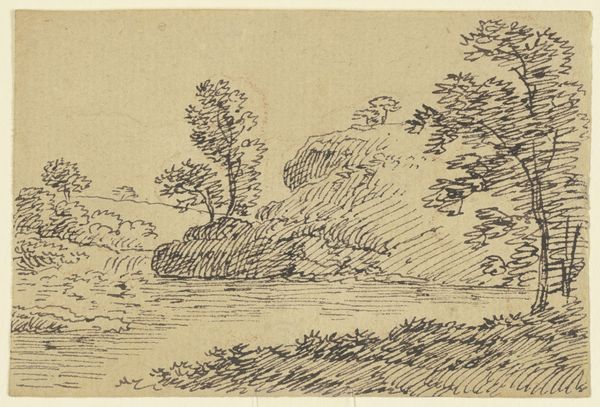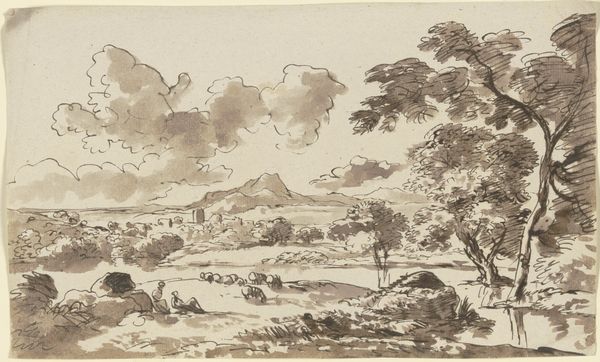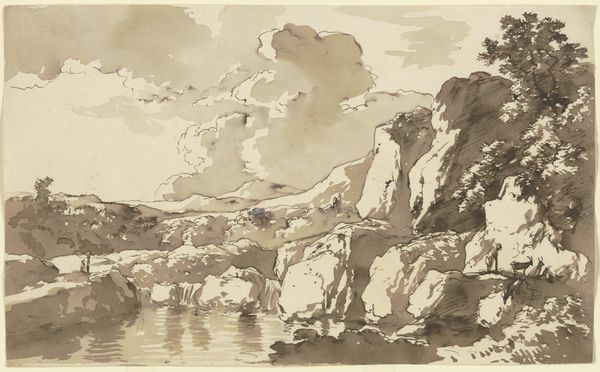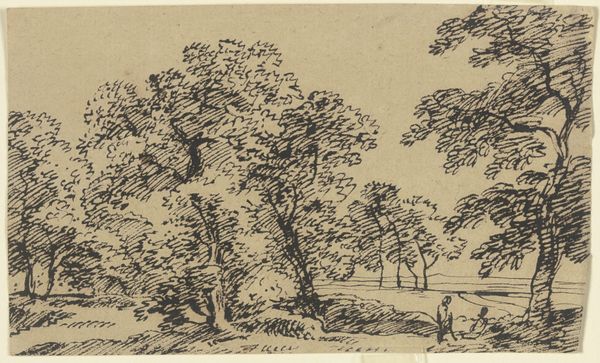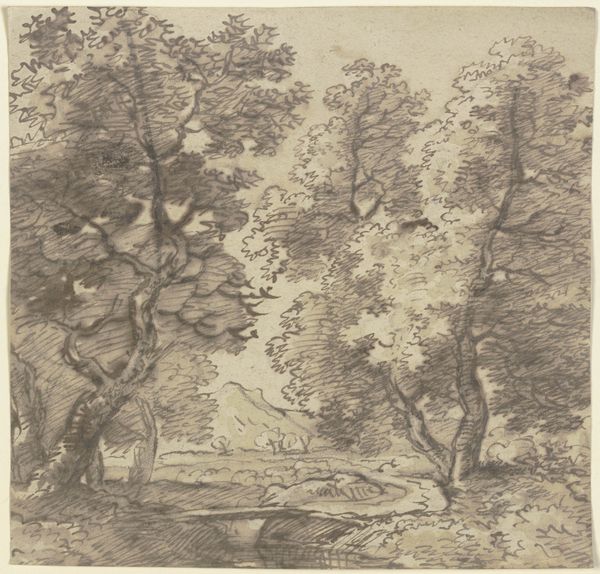
drawing, ink, pencil
#
drawing
#
landscape
#
ink
#
romanticism
#
pencil
#
15_18th-century
Copyright: Public Domain
Editor: So, this is "Gewässer mit hoher Uferböschung, rechts weidendes Vieh" by Franz Kobell. It's an ink and pencil drawing in the Städel Museum’s collection. It’s got a romantic, pastoral feel, but there’s also something…untamed about the landscape. How do you interpret this work? Curator: Well, consider how waterways have functioned symbolically across cultures. Here, it's not just a river. Think about it as a visual echo of transitions. A liminal space. Kobell captures that. Editor: A liminal space, how so? Curator: Note how the high bank obscures what’s beyond. The figures with their grazing animals become a vignette on the edge, participants in a larger drama we can't quite see. Kobell offers us the known--domesticated nature, yet hints at a sublime, unknowable beyond. What does that division evoke for you? Editor: A sense of longing, maybe? Or the pull between safety and adventure. That tension is palpable. So the water isn’t just water... Curator: Exactly! And those rocks? Their solidity contrasts with the water’s fluidity, right? Stability versus change, another fundamental duality of human existence reflected through the natural world. Landscapes weren't *just* pretty pictures. They told stories. Editor: That's fascinating. I had never considered the landscape elements themselves carrying so much symbolic weight! Thanks for expanding my view of this seemingly simple scene. Curator: My pleasure. Seeing with symbolic eyes transforms how we understand not just art, but the world around us. It adds layers of narrative and meaning.
Comments
No comments
Be the first to comment and join the conversation on the ultimate creative platform.
